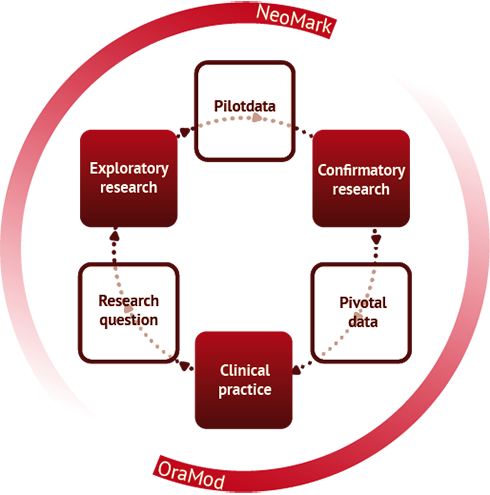Clinical Problem
- Home
- Project
- Clinical Problem

Malignant neo-plastic diseases are the second cause of death in the western world. In some neoplasms, such as Oral Squamous Cell Carcinoma (OSCC), loco-regional recurrence is the most common cause of disease progression and death in a significant percentage of cases.
Current clinical markers (stage, grade, plasma markers) do not display sufficient accuracy in discriminating patients at high risk of recurrence and who should be treated more aggressively.
Despite big progress in diagnostic tests and equipment, recurrences may not be detected on time with usual methods, such as CT/MRI scans, and clinicians must rely on a few set of rough parameters to take their treatment decisions.
To prevent OSCC reoccurrences, surgery is often extremely invasive to ensure a complete removal of tumour cells. The effects of treatment can be devastating, associated with disfigurement, impairments in speech and swallowing and an overall compromise in quality of life.
Knowing in advance which patients will have the highest risk of disease recurrence would have the potentiality to improve patient’s survival, enhance their quality of life, and to focus efforts and resources on high-risk cases.
Facts and Figures
- Head and neck cancer (HNSCC) is the seventh cancer for incidence worldwide (WHO): oral squamous cell carcinomas (OSCC) account for at least 25% of HNSCC.
- The incidence trend is growing especially in the younger population.
- 640.000 new cases of Oral Cancer are diagnosed each year (Europe accounts for 10% of this number).
- Reoccurrence rate between 25 and 40% over 5 years, the majority (90%) within 2 years from primary treatment.
- 8% of relapsers are estimated to remain disease-free upon second surgery (under-estimated high-risk cases).
- 2% of currently estimated low-risk cases develop a reoccurrence within 5 years.
- Average cost of primary treatment (US estimations) exceeds 70 K$, and may reach up to 156 K$ for multimodal treatments (17% of cases).
- Post treatment costs estimations 10 K$/year and indirect social costs more than 7 K$/year.


